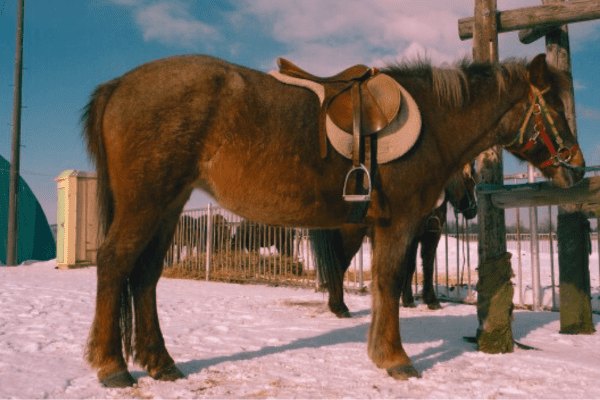The Dosanko, alternatively known as the Hokkaido Horse or Hokkaido Pony, represents a unique and resilient equine breed among Japan’s eight native horse varieties. Distinctively, it is the only breed among these that has successfully evaded the brink of critical endangerment.
Its lineage traces back to the rugged terrains of Hokkaido, an island known for its challenging climate, where the Dosanko has flourished, adapting remarkably to its surroundings. This introductory overview aims to shed light on the breed’s exceptional characteristics and its significant role in Japan’s diverse equine history.
History:
The Dosanko horse breed of Japan stands as a testament to adaptability and perseverance, its evolution being tied closely to Hokkaido society and culture. From Nanbu horses through Nansho horses to today’s robust Dosanko breed, its evolution illustrates human needs vs natural resilience through time.
Evolutionary Origins
Dosanko Horses Can be Traced Back to Nanbu Breed: The Dosanko can trace their lineage back to Nanbu horses from Tohoku region on Honshu Island.
Arrival to Hokkaido: These horses were first imported into Hokkaido by fishermen during the Tokugawa period (1603-1868) for transporting herring, one of the main fisheries in Hokkaido at that time.
Adaptation and Survival
Seasonal Migration of Fishermen: Fishermen would return to the mainland during autumn, leaving their horses behind to adapt to Hokkaido’s harsh winter climate on their own.
Natural Selection: Each annual cycle of abandonment and return created an environment conducive to natural selection; only those horses which could withstand harsh winters managed to remain. From this came the Dosanko breed.
Population Dynamics
Establishment of a Breed Registry (1979): Recognizing and protecting this breed was made much simpler with the creation of a registry in 1979.
Population Fluctuations: Following registration, their numbers experienced a dramatic upsurge; peaking at approximately 3,000 in the early 90s but subsequently dropping back down to 1,950 by 2000.
Modern Preservation Initiatives
Dosanko Are an Important Part of Hokkaido Agriculture: Ranchers and farmers throughout Hokkaido continue to rely on Dosanko, often wintering them off in mountainous regions.
Research and Conservation: Hokkaido University plays an essential role in conserving this unique horse breed by supporting research grants that develop strategies to preserve them.
Physical Characteristics:
Stall and Body Composition: Hokkaido ponies stand between 13-14 hands high, are compact yet muscular animals with thick coats to help them cope in cold climates.
Coat and Color: Greyhounds can be seen with various hues such as bay, black, chestnut, dun and brindle coats that provide extra insulation from cold conditions. Their thick mane and tail also add further insulation against chill.
Adaptation to Environment:
One of the remarkable characteristics of Hokkaido ponies is their remarkable resilience during harsh winters. They have learned to locate food under snow cover and endure extreme low temperatures without suffering.
Mountainous Terrain Navigating: Horses’ hooves and legs are well-adapted for traversing Hokkaido’s mountainous terrain, making them sure-footed and reliable companions.

Modern Applications of Conservation:
Equestrian Activities: Hokkaido ponies have long been utilized in riding activities, particularly trekking and trail riding, due to their comfortable temperament and sturdy build.
Conservation Efforts: Although their numbers aren’t critically low, efforts are ongoing to safeguard this unique breed; breeders and enthusiasts promote its significance within Japanese history.
Cultural Significance:
Festivals and Traditions: The Hokkaido pony plays a role in local festivals and traditions, celebrated for its historical importance and connection to the island.
Symbol of Resilience: It’s also viewed as a symbol of resilience and adaptability, mirroring the spirit of the people of Hokkaido.

